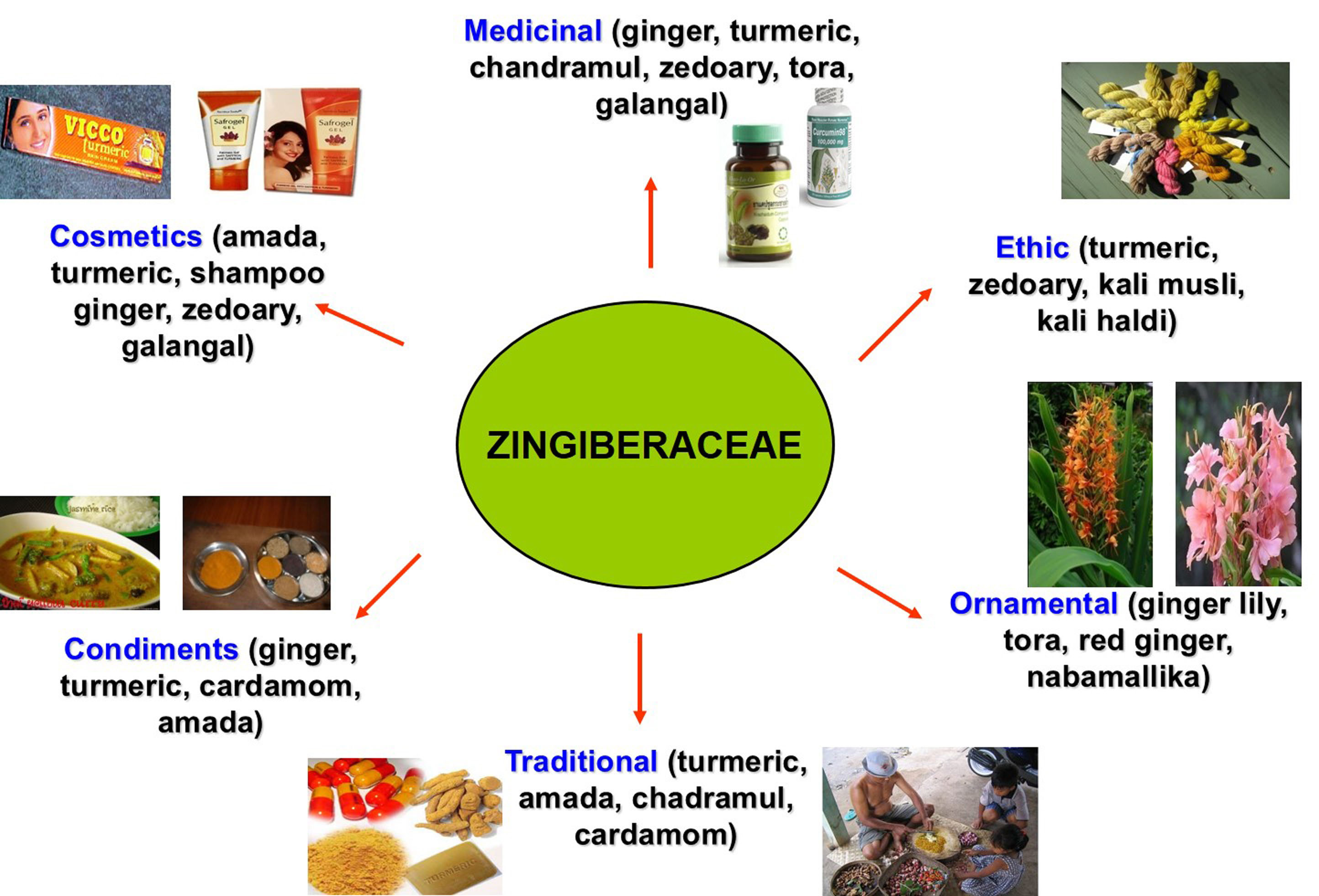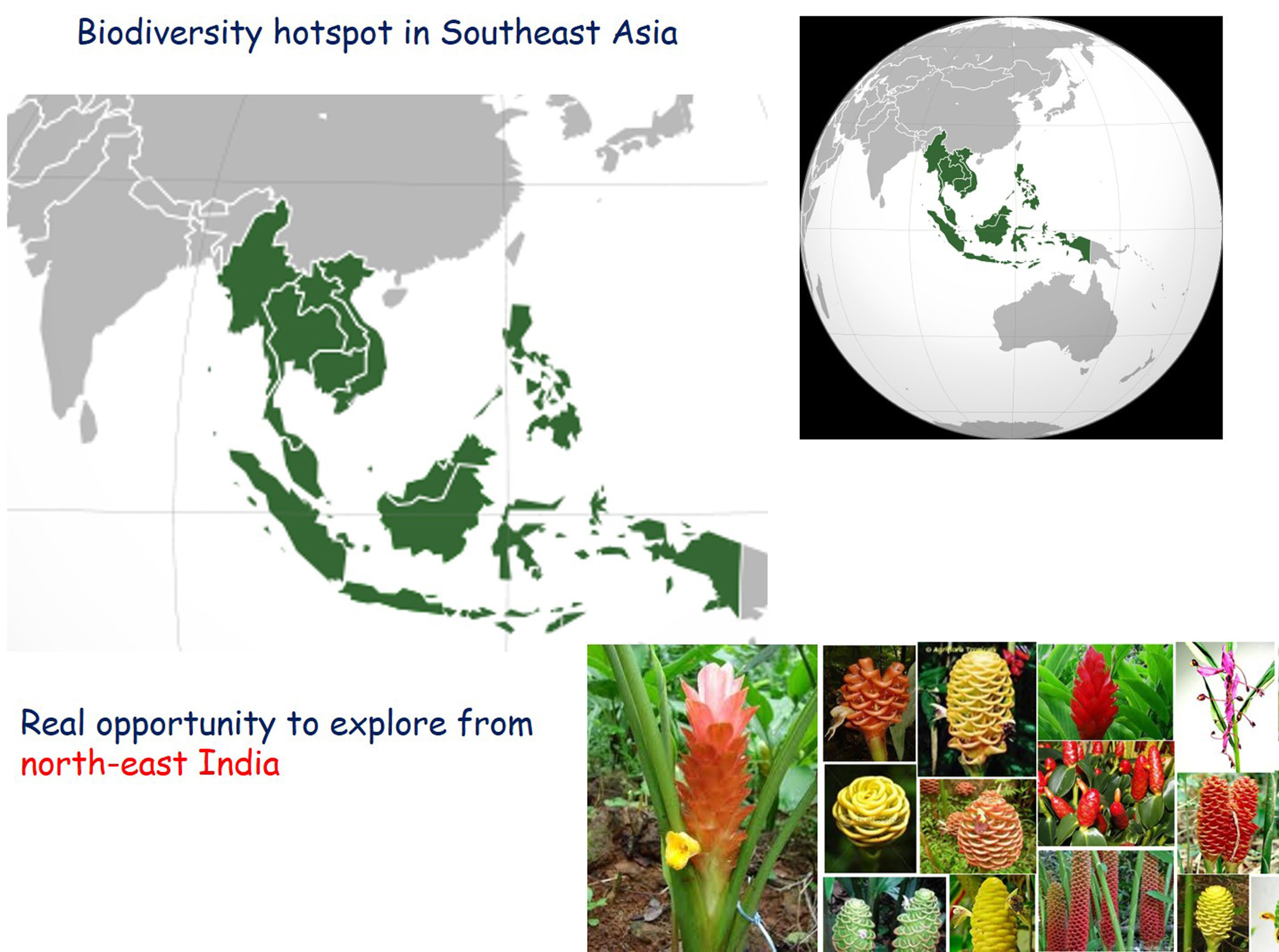About Zingiberaceae
Zingiberaceaes are aromatic perennial herbs belonging to the group angiosperm (the flowering plants) and find its uses in various domain of life. With a large ensemble of 50 genera and 1,548 reported species, it is an important contributor to medicines, ornamentally important flowers, food condiments and spices.
The rhizome is the primary reason for its importance, while its vivid and attractive inflorescence imparts ornamental values to the family. They are distributed pantropicaly with high concentration of diversity in Southeast Asia and are used frequently as homemade remedy for dyspepsia, colic, cold. The recent scientific studies has shown that compounds from the family possess anti-inflammatory, antiviral, antibacterial, antifungal and antioxidant properties.
Some remarkably example usage of plants from this family includes: drug for cancer derived from Curcuma longa extract is under drug trials' while ginger tea (decoction of ginger along with tea leaves) has long been used against common cold and flu and on a different note Hedychium coronarium is national flower of cuba because of its beautiful inflorescence and spotless white colour.
Species in the family are known for their aromatic oils that are used in cosmetics, bath products, seasoning, for dyes and for medicinal purposes. The family provides ginger root, cardamom. The roots are starchy and hence some of the species are used as a source of food. These plants are important biomass contributor to some of the ecosystem.

The unique richness of bioresources in Northeast (NE) India makes it a potential hub of economy growth of the country to a competent level if utilized and tapped efficiently. The moist tropical region of NE India contains some of the most interesting and unique forests in the world. It has been estimated that the total market value of medicinal plants/ herbs from NE alone that are traded out runs to 150 crores per year (source NEDFI 2006). Emergence of Intellectual Property Rights (IPR) as a major economic factor and widespread use of bioresources and traditional knowledge (TK) of developing countries by multinational pharmaceutical have instigated actions for conservation, protection and utilization of rich bio resources. With almost 22 genera and 178 species, the family Zingiberaceae has immense medicinal value and finds extensive use in the indigenous system of medicine and many are endemic to this region. However, work on this family is regularly constrained by difficulties in species identification and there is no database. It is clear that the potential for genetic resources of NE cannot be realized until we have repository and a database inventory of biodiversity of the location that will further help and enhance the value addition and utilization of the same. It is here that DNA Barcoding can be of immense help.

DNA barcodes have been developed which provides unambiguous identification of species especially of those in which biologically important properties or molecules with IPR potential have been identified (Sumit et al 2008). The work has important implication in germplasm utilization and conservation. Initially referred to as DNA typing or profiling, the DNAB initiative has taken a huge leap forward and several taxa have now been surveyed in their natural habitats using the technique.
Programmes dealing with DNAB (DNA Barcoding) based biodiversity inventory in Zingiberaceae of Northeast India would immensely benefit the Northeastern states of India housing a plethora of these ginger species. The work has important implication in germplasm utilization and conservation. Clearly it would be to the advantage of taxonomy to complement existing taxonomic tools with DNA barcoding by way of assembling molecular, morphological and distributional data and bridging it with traditional bioinformatics stream. Such an activity will lead to generation of informatics workbench facilitating acquisition, storage, analysis and publication of DNA barcode records in Zingiberaceae.
Contact
Dr. Latha Rangan
Address : Depatment of Biosciences and Bioengineering
Indian Institute of Technology, Guwahati
E-mail :
Phone :